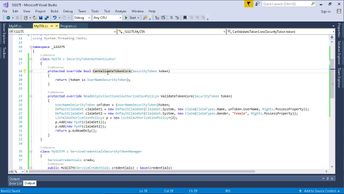ASP.NET MVC Web Applications: Claims-Based Authentication - use federated user authentication in an ASP.NET MVC web application
- create a Visual C# class library that uses the Windows Identity Foundation framework to work with a custom security token format
- create a custom security token handler class by inheriting and overridding properties and methods from the SecurityTokenHandler class
- use a custom security token handler to validate custom tokens and their signatures as well as to write custom tokens to XML and generate token signatures
- use a custom security token handler to validate custom token audience URIs, parse custom tokens, and create claims for custom tokens
- configure a secure token service that manages SAML 2.0 tokens in an ASP.NET MVC web application
- create a custom security token service configuration class and create a signing certificate utility that retrieves X509 certificates in an ASP.NET web application
- create a Visual C# class that implements a custom security token service in an ASP.NET web application
- create an ASP.NET Web Forms login page that is used by a custom security token service to authenticate users from a client ASP.NET web application
- create an ASP.NET client application that consumes tokens issued by a custom security token service
- edit a client application's Web.config file so that the client application may consume tokens issued by a given custom security token service
- handle token formats (for example, oAuth, OpenID, Microsoft Account, Google, Twitter, and Facebook) for SAML and SWT tokens
|


